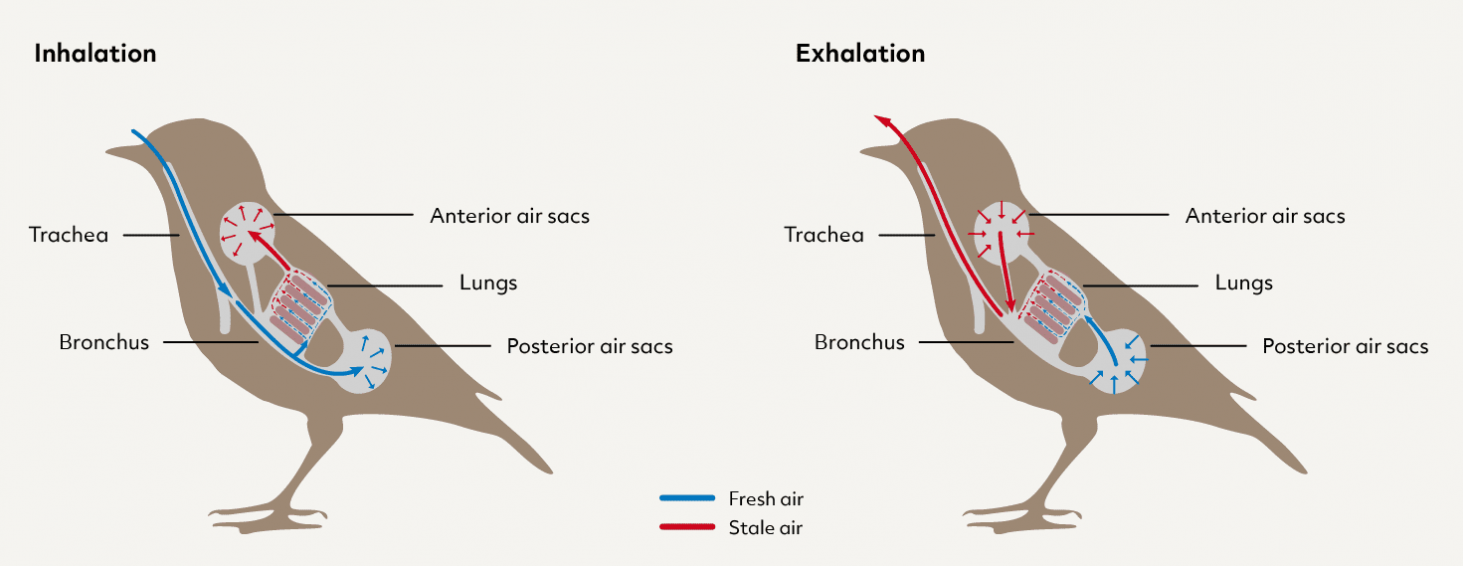Chapter 27 Birds
1/23
There's no tags or description
Looks like no tags are added yet.
Name | Mastery | Learn | Test | Matching | Spaced |
|---|
No study sessions yet.
24 Terms
Birds share a common ancestor with ___
crocodilians
contour feather
flight
quill, shaft (rachis), vane made of barbs and barbules (hooks/zippers or fluff/no hook)
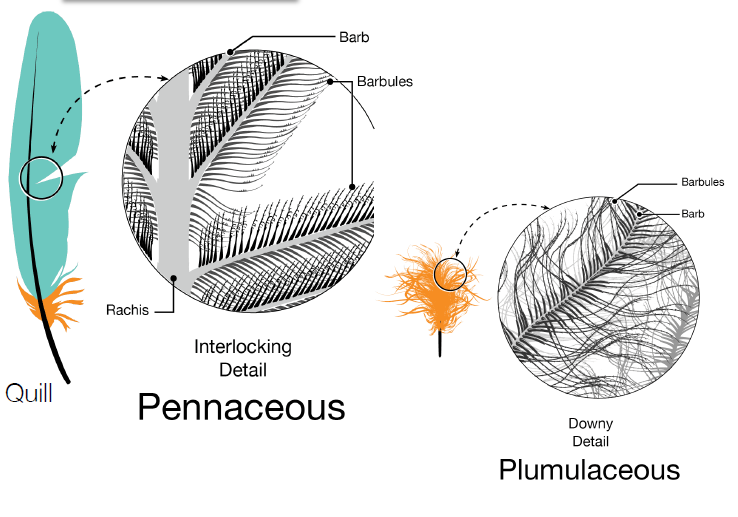
down feather
thermoregulation/insulation (buoyancy in water birds)
filoplume feather
sensory input in position of own feathers and environment
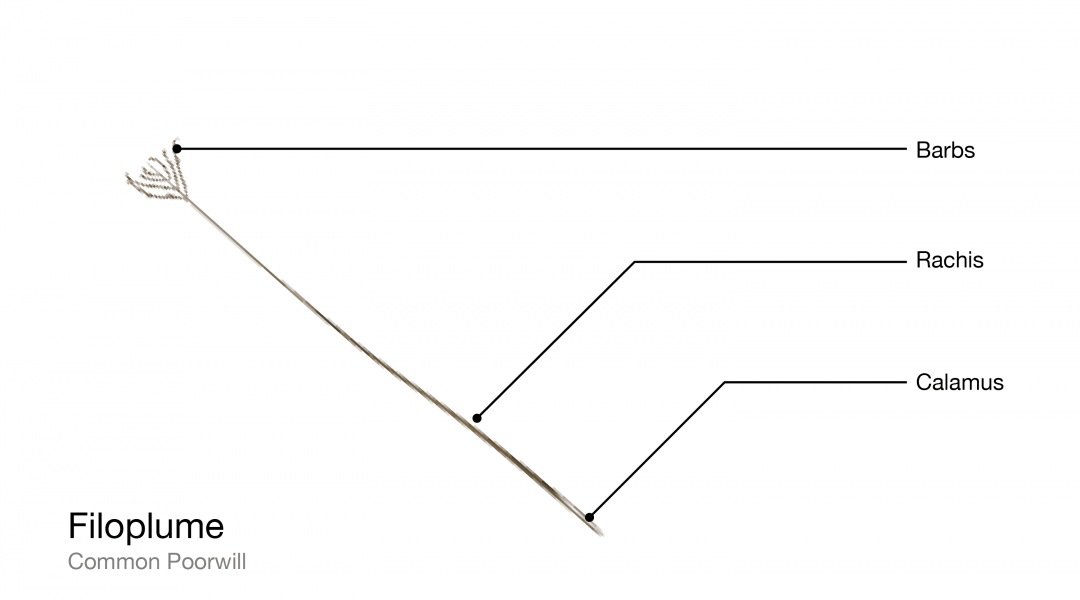
general feather characteristics
modified scales
made of keratin, molted every now and then SYMETTRICALLY for balance on both sides
color comes from pigment + structural color (how light reflects on surface of feathers = blue, iridescent (think peacock)
*preen feathers to fix the barbs/barbules for flight
skeletal system
lightweight, but study
pneumatized bones (includes air pockets/holes)
most vertebrae fused together to be more rigid (except neck)
large keel (from sternum) = attachment site for big flight muscles, allows for stability in entire body
-pectoral: contract → down
-supracoracoideus: contract → up
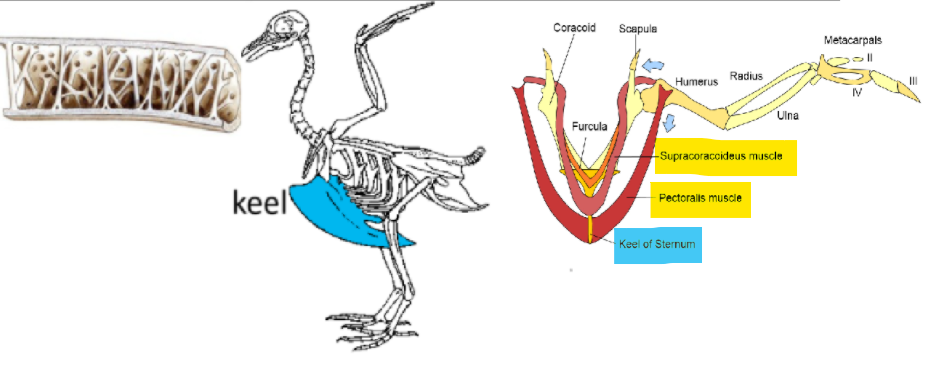
how do wings generate lift and thrust?
streamlined (very tight feathers), leading edge meets the air
diff in air pressure on upper and lower surface + downward movement of air = lift
lift:drag ratio made by ANGLE OF ATTACK and AIRSPEED
lift made at low speeds by ↑ angle of attack, but it makes stall/turbulence (going down). The stall is prevented by WING SLOTS

bird wings/sizes
flapping flight → thrust (move forward), soaring, gliding, hovering

respiratory system
air sacs (move air)
lungs with parabronchi (gas exchange, cross current)
continuous, one direction flow through lungs
2 cycles of in(spiration) and expiration(out) for 1 breath

circulatory system
four chambered heart + 2 separated pulmonary/systemic circuits w/ high pressure
bird beak shape + feeding
keratinized sheath to make beak, adjusted to crack seeds, swallow brey, tearing, spearing etc.
digestive system
crop: (storage + production of lipid/protein fluid for babies 🙂 in some birds)
stomach in 2 parts:
-proventriculus (makes gastric juice, chemical processing)
-gizzard (grinding, physical digestion) [some birds swallow pebbles to help with grinding]
must eat a lot to maintain high metabolic weight, since no reserves of fat to be lightweight
![<p>crop: (storage + production of lipid/protein fluid for babies <span data-name="slightly_smiling_face" data-type="emoji">🙂</span> in some birds)<br> stomach in 2 parts:<br>-proventriculus (makes gastric juice, chemical processing)<br>-gizzard (grinding, physical digestion) [some birds swallow pebbles to help with grinding]<br>must eat a lot to maintain high metabolic weight, since no reserves of fat to be lightweight</p>](https://knowt-user-attachments.s3.amazonaws.com/43cd9bcc-128d-4154-86b2-add71e4a0e1c.png)
excretory system
use uric acid to conserve water
seabird have SALT GLANDS, ‘accessory kidneys to remove extra salt ‘cry out' the salt’
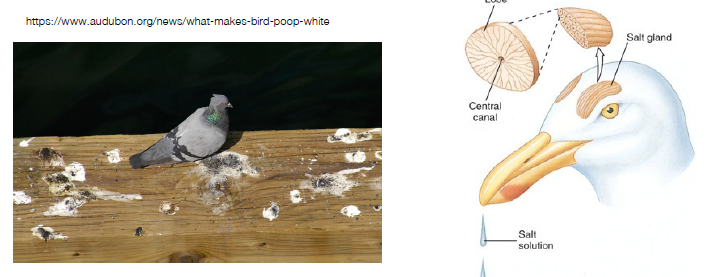
reproduction
very seasonal (gonads grow during this time),
males usually lack penis, so reproduce by bringing cloacas to one another
-exception of ducks, male have corkscrew penis to deposit sperm further into reproductive tract, and female ducks counter with ‘maze vagina’
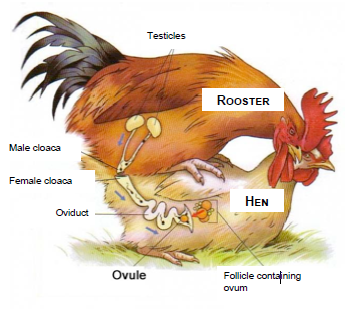
egg structure
sex determined by ZZ(male)/ZW(female)
left ovary and oviduct develop, and the right ovary/oviduct degenerate, so only 1 oviduct/ovary
Infundibulum (expanded end of oviduct) receives the discharged eggs from ovary, special glands add albumen (egg white) to egg as it passes down the oviduct
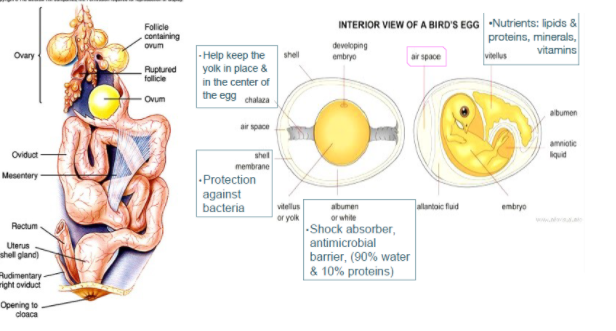
innate behavior
genetically determined behavior
releaser + sign stimulus: egg outside of nest (vision)
move beak in way to push egg back (fixed action pattern)

fixed action pattern
sequence of behaviors completed in response to a stimulus, species specific
releaser
triggering stimulus that initiates innate behavior
sign stimulus
particular aspect of releaser that animal responds to (shape, color, smell, sound
imprinting, and why it’s adaptive
type of learned behavior that creates a stable behavior when young animal is exposed to stimulus in critical period of development
geese/ducklings follow mom, and no other animal, and if separated at birth, will follow the first large object seen
bird migration
reason: increases amount of space for breeding, in turn decrease territorial behavior
process:
-change in day length increase hormonal activity, stimulates physiological/behavior changes, north for summer breeding grounds (lots of food, few predators, south for wintering regions
follow migratory routes called flyways
Combination of instinctive + learned behavior:
- Magnetic cues (innate)
- Visual cues (learned)
- Olfactory cues (learned) also used in some
- Stars
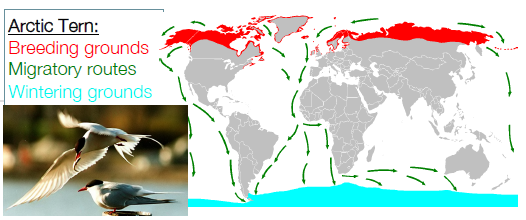
bird song
combination of learned + innate factors
(male white crowned sparrow)
learns song by listening to father
-if raised in lab = abnormal song, if exposed to recordings during critical period it’ll be ok
Learning alone isn’t enough to sing properly
-if exposed to song of another species, it won’t learn the song since the brain is constrained to only recognize the sound made by males of OWN species
-wrong song = no reproduciton, so natural selection won’t pick it
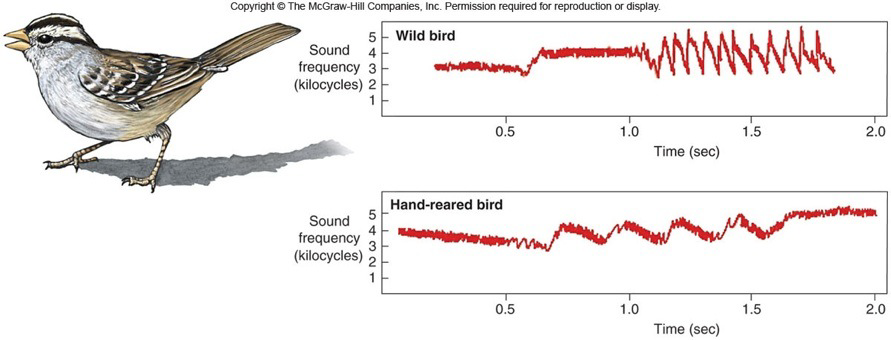
common ancestor between crocodiles and birds
Archeopteryx
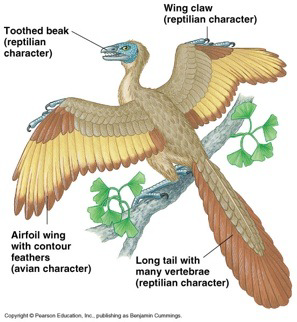
Trace the path of air through the bird respiratory system
Air →beak→ trachea→ posterior air sacs (behind the lungs) during the 1st inhalation.
1st Exhalation: Air from posterior air sacs → lungs.
2nd Inhalation: Air from lungs → anterior air sacs.
2nd Exhalation: Air from anterior air sacs → exits through the beak.
